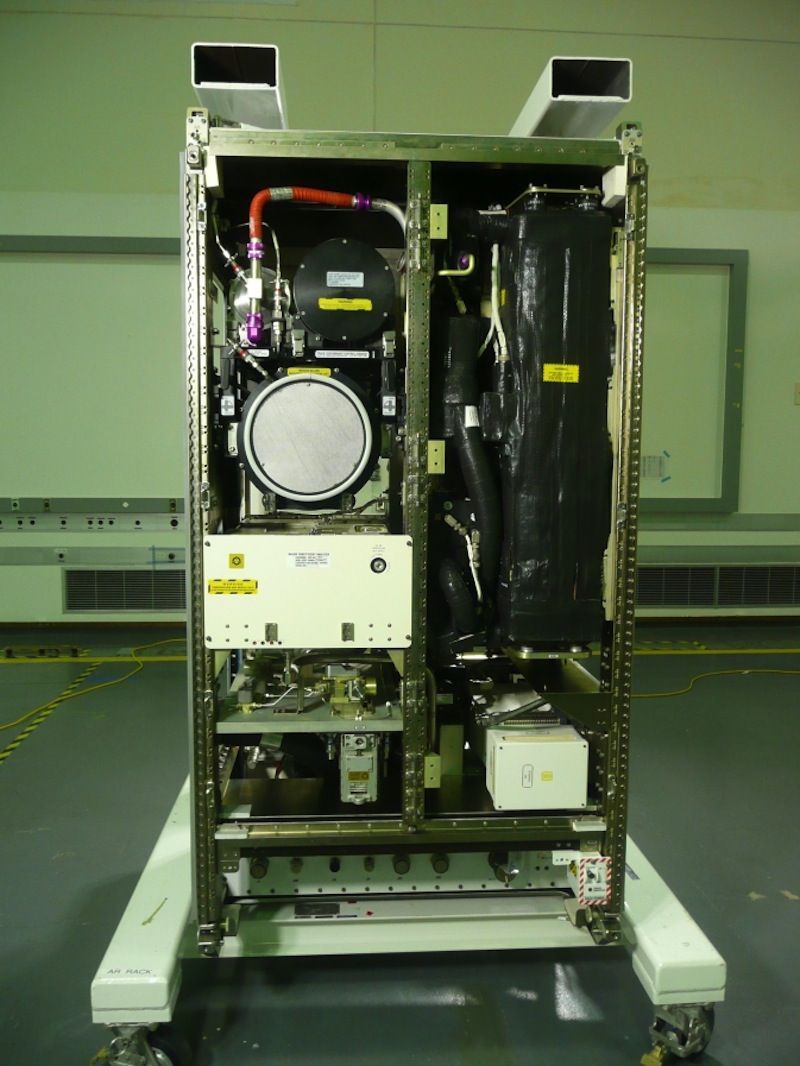Elon Musk said Tesla is building “RNA microfactories” for CureVac and other coronavirus vaccine makers.



Astronomers have found a way to pinpoint our solar system’s center of mass to within a mere 330 feet (100 meters), a recent study reports.
Such precision — equivalent to the width of a human hair on the scale of a football field — could substantially aid the search for powerful gravitational waves that warp our Milky Way galaxy, study team members said.
Supernovae are some of the most energetic events in the universe, and the resulting nebulas are a favorite for stargazers. To better understand the physics behind them, researchers at Georgia Tech have created a “supernova machine” in the lab.
Stars are basically big volatile balls of gas, sustained for millions of years by a delicate balancing act. Intense gravity wants to pull the matter towards the center, but nuclear fusion in the core is pushing outwards at the same time. Eventually though, the core inevitably runs out of nuclear fuel, and gravity wins the battle.
The star then collapses inwards very quickly, and the resulting shock wave sends material flying outwards at extreme speeds. The event is a supernova, the swirling gas and matter is a nebula, and the dense object formed in the center is a neutron star or a black hole.
But lasers also show promise to do quite the opposite — to cool materials. Lasers that can cool materials could revolutionize fields ranging from bio-imaging to quantum communication.
In 2015, University of Washington researchers announced that they can use a laser to cool water and other liquids below room temperature. Now that same team has used a similar approach to refrigerate something quite different: a solid semiconductor. As the team shows in a paper published June 23 in Nature Communications, they could use an infrared laser to cool the solid semiconductor by at least 20 degrees C, or 36 F, below room temperature.
The device is a cantilever — similar to a diving board. Like a diving board after a swimmer jumps off into the water, the cantilever can vibrate at a specific frequency. But this cantilever doesn’t need a diver to vibrate. It can oscillate in response to thermal energy, or heat energy, at room temperature. Devices like these could make ideal optomechanical sensors, where their vibrations can be detected by a laser. But that laser also heats the cantilever, which dampens its performance.


An international team of researchers has demonstrated an innovative technique for increasing the intensity of lasers.
In a paper that made the cover of the journal Applied Physics Letters, an international team of researchers has demonstrated an innovative technique for increasing the intensity of lasers. This approach, based on the compression of light pulses, would make it possible to reach a threshold intensity for a new type of physics that has never been explored before: quantum electrodynamics phenomena.
Researchers Jean-Claude Kieffer of the Institut national de la recherche scientifique (INRS), E. A. Khazanov of the Institute of Applied Physics of the Russian Academy of Sciences and in France Gérard Mourou, Professor Emeritus of the Ecole Polytechnique, who was awarded the Nobel Prize in Physics in 2018, have chosen another direction to achieve a power of around 1023 Watts (W). Rather than increasing the energy of the laser, they decrease the pulse duration to only a few femtoseconds. This would keep the system within a reasonable size and keep operating costs down.

In a development that could finally shed light on dark matter, an international team of scientists have detected neutral hydrogen atoms, from a galaxy other than our own, for the very first time.
The finding came thanks to the enormous Five-hundred-meter Aperture Spherical Radio Telescope (FAST), which sits in a hilly, green natural basin in southwest China’s Guizhou Province.
The researchers detected the hydrogen coming from three extragalactic galaxies with only five minutes of exposure, a feat that demonstrates the exceptional sensitivity of the telescope. It is the first time neutral hydrogen from outside the Milky Way has been detected.



Scientists at the University of Tsukuba use computer calculations to propose a new way to rearrange the carbon atoms in a diamond to make it even harder, which may be useful in industrial applications that rely on synthetic cutting diamonds.
Researchers at the University of Tsukuba used computer calculations to design a new carbon-based material even harder than diamond. This structure, dubbed “pentadiamond” by its creators, may be useful for replacing current synthetic diamonds in difficult cutting manufacturing tasks.
Diamonds, which are made entirely of carbon atoms arranged in a dense lattice, are famous for their unmatched hardness among known materials. However, carbon can form many other stable configurations, called allotropes. These include the familiar graphite in pencil lead, as well as nanomaterials such as carbon nanotubes. The mechanical properties, including hardness, of an allotrope depend mostly on the way its atoms bond with each other. In conventional diamonds, each carbon atom forms a covalent bond with four neighbors. Chemists call carbon atoms like this as having sp3 hybridization. In nanotubes and some other materials, each carbon forms three bonds, called sp2 hybridization.